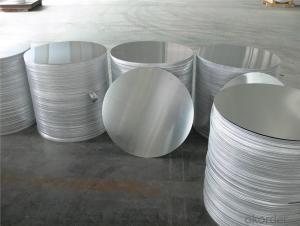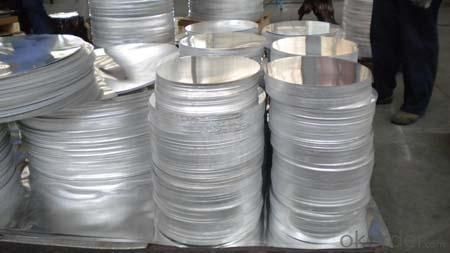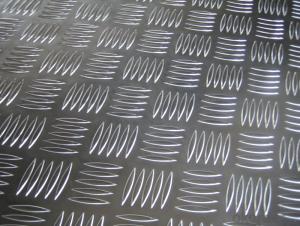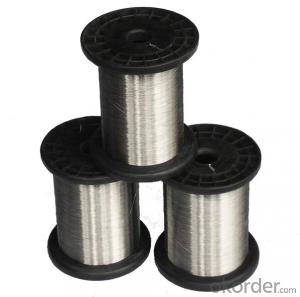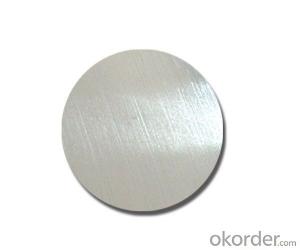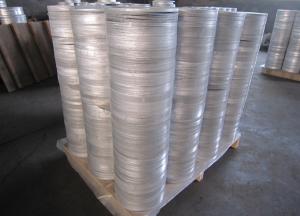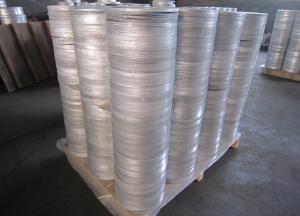4ft x 8ft Continuous Casting Aluminum Circle AA1100 Sheets
- Loading Port:
- Shanghai
- Payment Terms:
- TT OR LC
- Min Order Qty:
- 2 m.t.
- Supply Capability:
- 2000 m.t./month
OKorder Service Pledge
OKorder Financial Service
You Might Also Like
Specification
1.Structure of Aluminium Cirlce
Aluminium Circle is one semi-finished aluminium material. Aluminium Circle is widly used cookware, for example, aluminium pot, aluminium pan, aluminium cup ect. Our aluminium circle are widly exported to African market. We export more than 2000 tons every month. We can assure the breakage rate below 5%. Extra breakage will be responsible by our company.
2. Main features of the product
a.Competitive price---We have our own mills and can produce mill finished aluminium coils, so we can control the production cost better.
b.Professional after-sale service---We have more than 15 years exportation experience and you need not worry about the exporation problems.
c.Fast delivery time---We can control the delivery time within 35 days.
3. Image

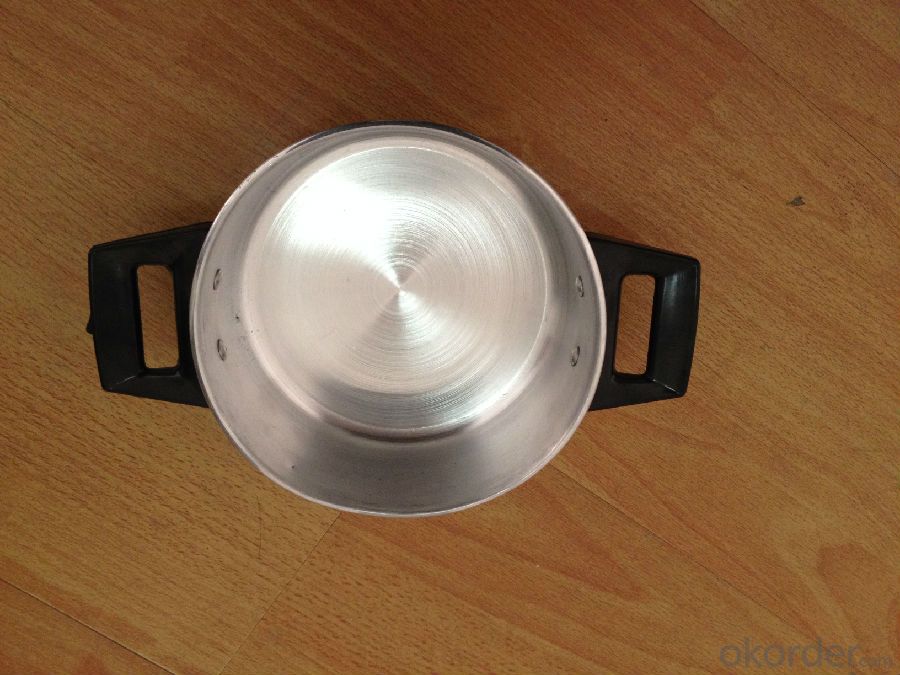
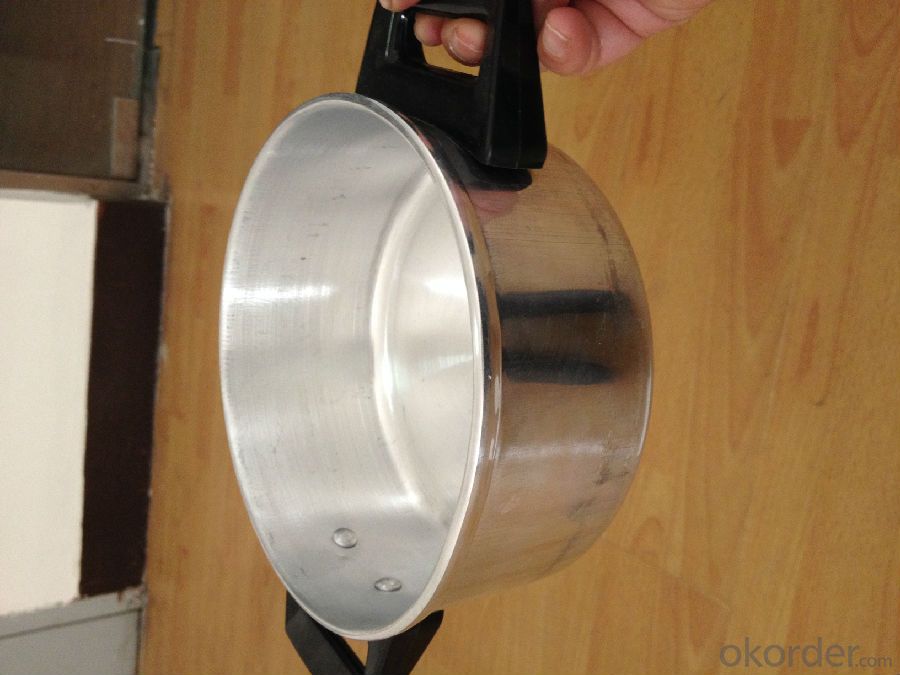
4. Product Specification
| ALLOY | Thickness | Diamter | Weight | Style |
| AA1100 | 0.2MM-2MM | 100MM-1000MM | 2 TONS | Spinning |
5.FAQ:
What is the quality standard?
---Usually our standard is GB3880-2006
What is the largest width?
---It is 2300mm
What is the MOQ?
---Usually we can accept 2 tons.
- Q: Are the aluminum sheets suitable for manufacturing automotive parts?
- Yes, aluminum sheets are suitable for manufacturing automotive parts. Aluminum is lightweight, corrosion-resistant, and has excellent strength-to-weight ratio, making it an ideal material for automotive components. It offers flexibility in design, allows for fuel efficiency, and helps improve overall vehicle performance.
- Q: Describe the steps involved in installing aluminum sheets on a roof.
- <p>Installing aluminum sheets on a roof involves several key steps: 1) Inspect the roof structure to ensure it can support the new material. 2) Remove any existing roofing material. 3) Install roof underlayment to protect against moisture. 4) Position the first aluminum sheet at the lowest point of the roof, aligning it with the eaves. 5) Secure the sheet using clips or screws, ensuring a watertight seal. 6) Continue installing sheets up the roof, overlapping each by at least 2 inches for a secure fit. 7) Cut and fit sheets around vents, pipes, and other roof protrusions. 8) Install flashing and trim to finish edges and seal the roof. 9) Check for proper alignment and secure all fasteners. 10) Clean up debris and inspect the installation for any gaps or leaks.</p>
- Q: Can aluminum sheets be used in marine environments?
- Yes, aluminum sheets can be used in marine environments. Aluminum is a commonly used material in marine applications due to its excellent corrosion resistance. It forms a protective oxide layer on its surface, which prevents further corrosion in the presence of saltwater or other corrosive elements found in marine environments. Aluminum sheets are lightweight, yet strong, making them ideal for a variety of marine structures such as boat hulls, decks, and superstructures. Additionally, aluminum is highly durable and has a long lifespan, further enhancing its suitability for marine applications.
- Q: Can aluminum sheets be recycled?
- Indeed, it is possible to recycle aluminum sheets. Aluminum stands as one of the extensively recycled substances globally due to its ability to be recycled incessantly without compromising its quality. The recycling of aluminum sheets entails melting them back to their initial form and subsequently molding them into fresh sheets or alternative aluminum commodities. This procedure demands markedly less energy when contrasted with the production of aluminum from primary materials, thus rendering the recycling of aluminum sheets an environmentally viable choice.
- Q: Are 101 aluminum sheets suitable for cryo-treating applications?
- Indeed, cryo-treating applications can benefit from the utilization of 101 aluminum sheets. Cryo-treating encompasses the practice of exposing materials to extremely low temperatures to enhance their strength, durability, and resistance to wear. 101 aluminum, being a commercially pure alloy, boasts exceptional corrosion resistance and favorable mechanical properties. It can endure cryogenic temperatures without experiencing considerable strength degradation or any adverse consequences. As a result, the application of 101 aluminum sheets in cryo-treating endeavors can effectively yield desired advantages and augment performance.
- Q: Can aluminum sheets be used for lithographic printing?
- Yes, aluminum sheets can be used for lithographic printing. Lithographic printing, also known as offset printing, relies on the principle that oil and water do not mix. Aluminum plates are used as the printing surface in lithography because they can retain an image when treated with a combination of chemicals. The image areas attract ink, while the non-image areas repel it. This allows for high-quality and precise printing.
- Q: Can aluminum sheets be used for honeycomb panels?
- Yes, aluminum sheets can be used for honeycomb panels. The lightweight yet sturdy nature of aluminum makes it a popular choice for constructing honeycomb panels, which are commonly used in aerospace, automotive, and construction industries for their strength-to-weight ratio and structural integrity.
- Q: I'm buying a sword this afternoon for about 100 bucks i'm using it mainly to take pictures of and hang it on my wall. I looked up tips about buying swords and i think the sword i want is made out of aluminum. Could i use this sword as protection on an armed robber who would break into my house?
- Nothing wrong with buying a wall hanger. In a worst case scenario: sure. Pointy end goes into the other guy. But you are far better off with a kitchen knife, that has a whole lot less chance of breaking or shattering and injuring you, plus you don't need any room with it. Against an armed robber, more than likely you would get killed. Sword work even for guys trained with it, doesn't work great in tight spaces like halls. Having zero training with a sword and attempting to use it, will more than likely result in your injury even if you were just playing around and not attempting to fight for your life. If you are truly interested or worried about home protection, a shotgun is best, a handgun would be next, and even then some time at the range and some qualified instruction is needed. As a last resort matter of life or death, you are scrambling and only your wall hanger is available, sure it gives you a slight edge over being unarmed (maybe). It also hampers you, it ties up both of your hands, it requires space to use, and more than likely would break or severely bend the first time it contacts anything hard, it also elevates your threat level to an armed robber. Meaning he will be more willing to shoot you fearing his life is in danger. Or it could go the other way completely and scare the guy off... no telling. I wouldn't rely on it as a sole means of home protection, or even as an item of last resort (again see kitchen knife). For home protection, get a dog, get an alarm, and get a gun. Shotgun is point and shoot, without a lot of worry of penetration through walls and such injuring other members of your house. Handgun requires some training but is very effective. I can tell you that the unique sound of racking a shell on a pump action shotgun is a very effective intimidator and deterrant.
- Q: I saw a guy on ebay take a washed out paint can fill it full of lighted charcoal bricks and a tin can in the middle. He was melting aluminum cans in there then pured it into a mold. Does this really work and does anyone have any good ideas on how else to do this?
- Aluminum alloys melt at around 1200 degrees, aluminum cans maybe somewhat lower, but I doubt a tin can would hold up long enough to melt much aluminum, and you would need to be very careful, any moisture in your mold will cause the aluminum to literally explode back into your face. I am not saying it couldn't be done, but you really would need lots of safety equipment before trying it.
- Q: Are aluminum sheets resistant to staining?
- Yes, aluminum sheets are generally resistant to staining due to their natural ability to form a protective oxide layer on the surface, which prevents corrosion and staining.
Send your message to us
4ft x 8ft Continuous Casting Aluminum Circle AA1100 Sheets
- Loading Port:
- Shanghai
- Payment Terms:
- TT OR LC
- Min Order Qty:
- 2 m.t.
- Supply Capability:
- 2000 m.t./month
OKorder Service Pledge
OKorder Financial Service
Similar products
Hot products
Hot Searches
Related keywords
